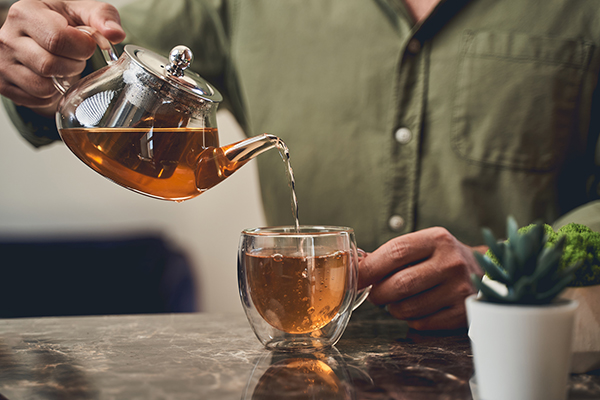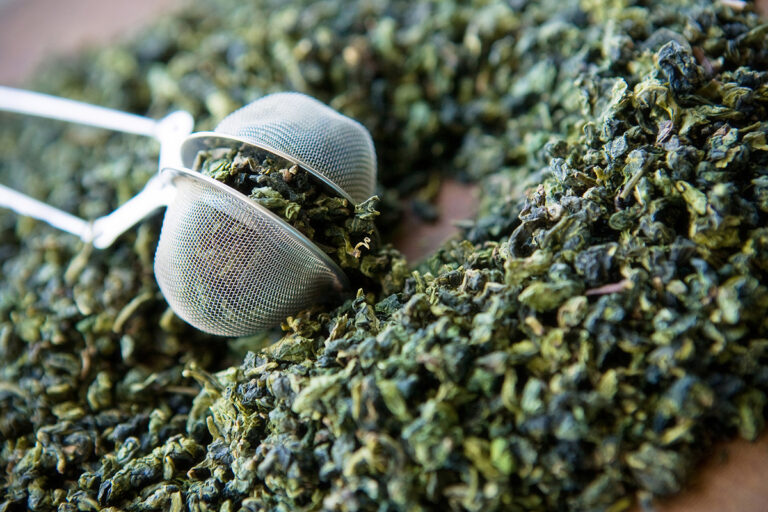11 Ways How to Make Green Tea Taste Good
Green tea is widely recognized for its numerous health benefits, but many people struggle to enjoy its natural taste. If you’re among those who find green tea too bitter, don’t worry!
In this article, we’ll explore 11 ways to make green tea taste good so you can reap its benefits without sacrificing flavor.

Why Is My Green Tea Bitter?
The bitter taste in green tea is mainly due to the presence of compounds called catechins, which are powerful antioxidants. When green tea is brewed at a high temperature or steeped for too long, these catechins become overly concentrated, resulting in a bitter taste.
Additionally, the quality of the tea leaves and the water used in brewing can also affect the taste.
By understanding these factors, you can make simple adjustments to create a more pleasant and enjoyable cup of green tea.
How to Make Green Tea Taste Better
Below are 11 ways how you can make your tea taste better.
Choose High-Quality Tea
The quality of your green tea leaves plays a significant role in the overall taste. Opt for loose-leaf tea over tea bags, as it tends to be fresher and higher in quality. Organic and shade-grown varieties are also great options, as they often have a smoother, less bitter flavor profile.
The most high-quality, less bitter shade-grown green teas are:
- Gyokuro: A premium Japanese green tea known for its sweet, umami flavor and deep green color.
- Matcha: A finely ground powder made from shade-grown tea leaves, typically used in Japanese tea ceremonies and known for its vibrant green color and smooth, creamy taste.
- Kabusecha: A Japanese green tea that is shaded for a shorter period than Gyokuro, resulting in a delicate balance of sweetness and astringency.
- Tencha: Tencha green tea is a high-quality Japanese green tea made from tea leaves that are shaded for about three weeks before harvesting. This tea has a smooth, mildly sweet, and umami-rich taste with low astringency and bitterness. Tencha is the base tea used to create Matcha powder through grinding.
These shade-grown green teas are known for their higher quality, milder flavors, and lower bitterness compared to other green teas.
Here’s a list of the best brands of green tea that you can try.
Use the Correct Water Temperature
Using the right water temperature can make a world of difference in the taste of your green tea. Boiling water can scald the tea leaves, causing bitterness. To avoid this, use water heated to around 160-180°F (70-80°C) when brewing green tea.
Use Proper Steeping Time
Overstepping your green tea can also lead to bitterness. For a milder and smoother taste, steep your tea for no more than 2-3 minutes. Experiment with different steeping times to find the perfect balance for your taste buds.
Use Fewer Leaves
Too many tea leaves can produce an overly strong and bitter taste. Try using fewer leaves for a more delicate flavor. Start with one teaspoon of loose leaves per 8-ounce cup and adjust as needed.
Add Sweeteners
Sweeteners can help balance the bitterness of green tea. Natural options like honey, agave nectar, or stevia can provide a touch of sweetness without adding too many calories.
You can consider pairing green tea with other fruits as well.
However, if you’re drinking green tea as part of your dietary plan to lose weight, you should not add honey or fruits but opt for a more simple recipe.
Add Lemon or Citrus
Adding a slice of lemon or a splash of citrus juice can help counteract the bitterness in green tea. The natural acidity in citrus fruits brightens the flavor while also enhancing the tea’s antioxidant properties.
Add Herbs and Spices
Experiment with adding herbs and spices like mint, cinnamon, or ginger to your green tea. These additions can bring a new depth of flavor and help mask any bitterness.
You can also consider trying a combination of green tea and ginseng, which offers a unique taste and additional health benefits.
Blend With Other Teas
Mixing green tea with other teas, such as black, white, or herbal varieties, can create a more complex and enjoyable flavor profile. To introduce new tastes, you can also try flavored green teas, such as jasmine or peach.
Add a Splash of Milk or Milk Substitute
While adding milk to green tea is not traditional, a small splash of dairy or non-dairy milk can help neutralize the bitterness and add creaminess. Be sure to use a light hand, as too much milk can overpower the green tea’s delicate flavors.
Additionally, adding milk to green tea could decrease its capacity to stain your teeth. This is due to the proteins in milk, which have the ability to attach to tannins. When these proteins bind to the tannins, they can stop them from adhering to your teeth, thus preventing discoloration.
Cold Brew
Cold-brewing green tea can result in a smoother, less bitter taste. Simply add tea leaves to cold water and let it steep in the refrigerator for several hours or overnight. Strain and enjoy over ice for a refreshing, less bitter beverage.
Mix Green Tea With Coffee
For a unique and potentially more flavorful beverage, try mixing green tea with coffee; the earthy tones of the tea can balance the bold flavor of coffee.
Final Thoughts
With these 11 tips, you can transform the taste of your green tea and create a beverage that you truly enjoy. Remember that experimenting is key, so don’t be afraid to try new combinations and techniques. By adjusting brewing methods, adding flavors, or blending with other teas, you can create a customized green tea experience that is both delicious and beneficial to your health.
Cheers to a better-tasting and healthier cup of green tea!





